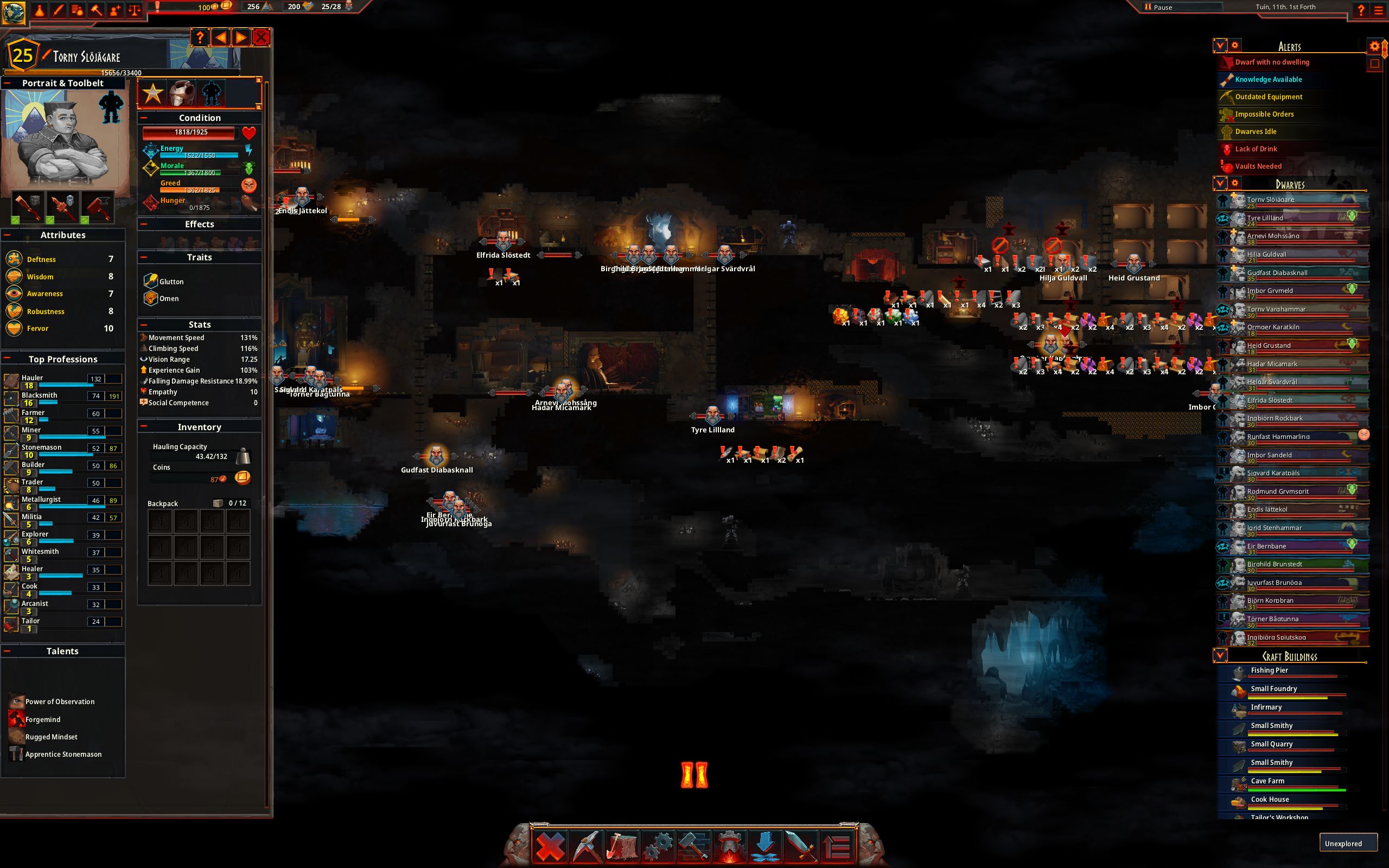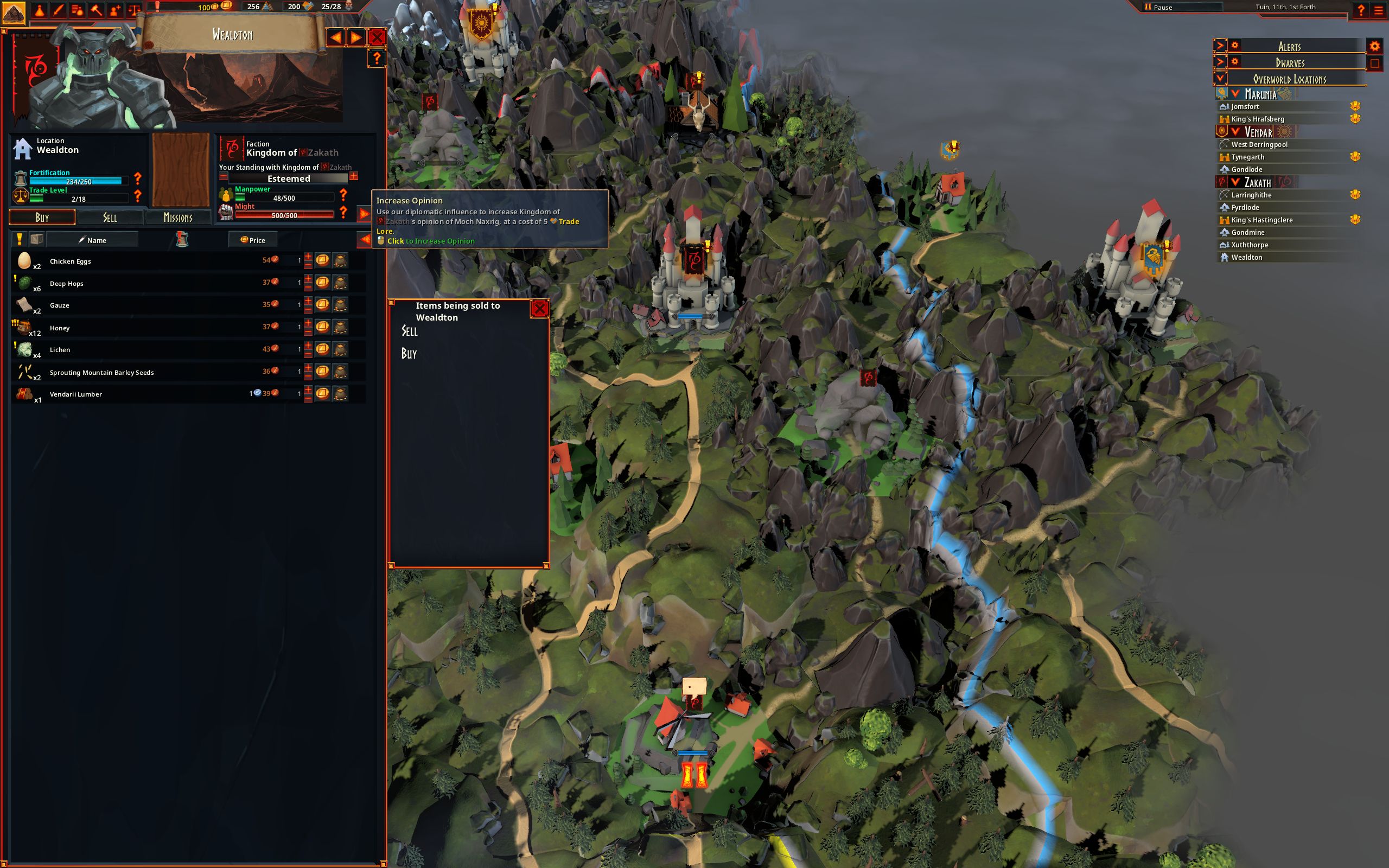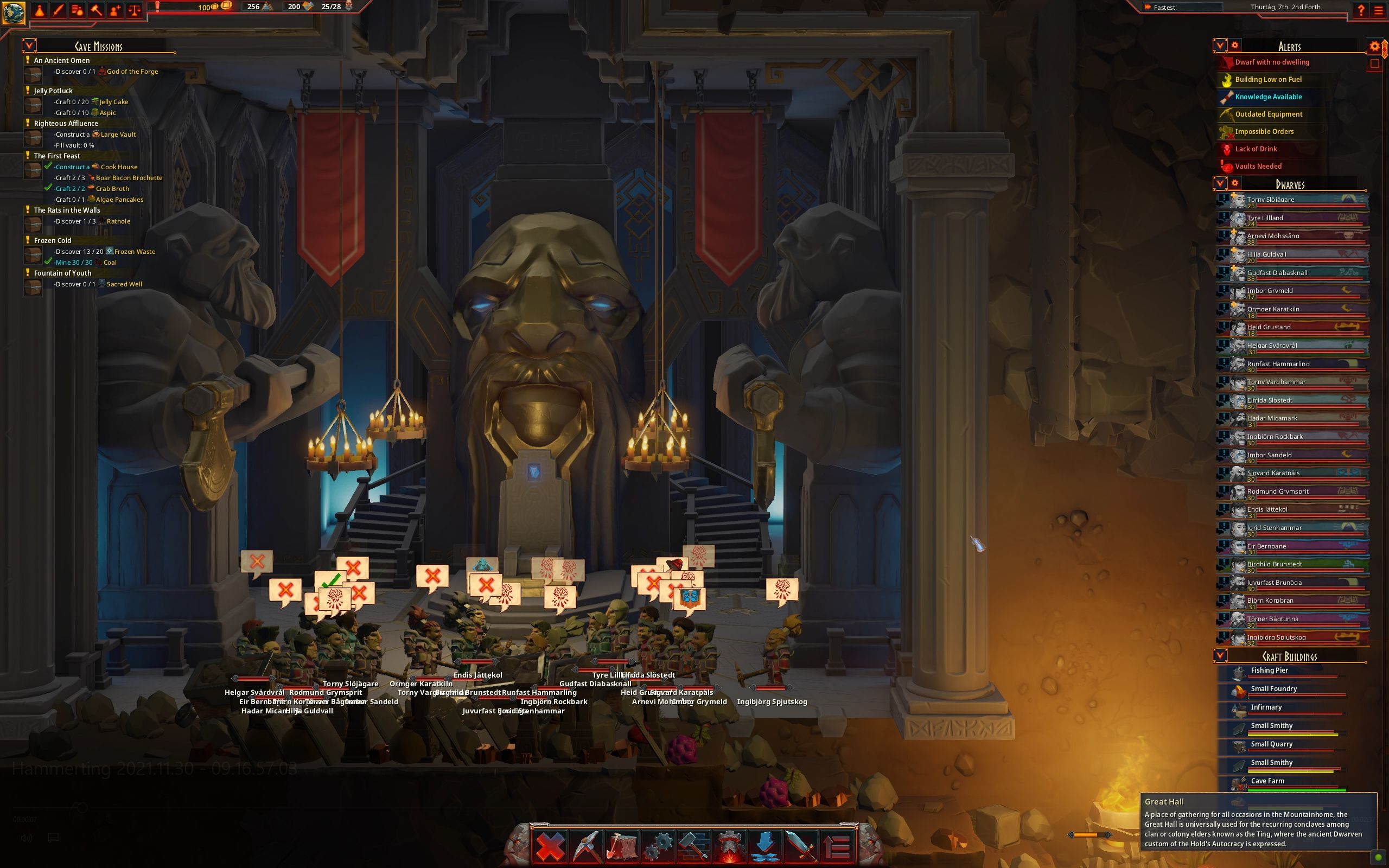Our Verdict
A fiddly take on management, survival and city building that you can still lose a weekend to.
PC Gamer's got your back
My great hall’s nearly ready, but there’s a problem. I need four pieces of mortar to finish the job. Mortar is made in the foundry, using lime. Lime is made in the arcane workshop, from bonemeal. The bonemeal, of course, is ground out of the bones of dead enemies in the cave farm. And the frustrating thing is that I have the bones to make the bonemeal to make the lime to make the mortar, but for some reason no one’s transporting it. No, in fact, the /really/ frustrating thing is that I seem to have got lost in this cave and wandered into a ‘90s adventure game.
Despite sharing its item acquisition logic with Gabriel Knight 3, Hammerting is a game about Dwarves living in a mountain cave. It’s also a game about creating improbably convoluted supply chains in order to arm your allies on the overworld and facilitate their conquest over your common enemy. It’s worth playing the tutorial.
Dwarf Fortress shouldn’t go without mention here, but this isn’t anything like as imposing or obtuse. Its vertical ant farm perspective and cheerfully drawn mountain dwellers do belie the level of complexity beneath though, and anyone averse to starting campaigns over and over again might want to sit down for this.

My first stewardship of Moch Naxrig, a hardy society tunneled within the side of a vast mountain, ended when all but one of my dwarves fell unconscious with starvation. By that point it was far too late to locate a food source, build a kitchen or trade for anything edible, so my society’s fate was sealed.
The second time I suffered the ignominy of a campaign restart happened about two hours later.
This time it was, well, starvation, but I’d also absolutely borked my economy. I spent all my money on new hires, and with nothing in the vaults I could only sit and wait while ten Dwarves took their sweet, sweet time to build dwellings for themselves. I needed to trade goods to strengthen diplomatic relations and help my overworld friends win battles with the enemy, but could produce none until this task was complete. And then they started to fall unconscious with starvation. Again. With little comprehension of why all my employees seemed to be on hunger strike whether or not there was food available, I started again—again.
Eventually, it became clear. It’s not just about placing new rooms and crafting new items, but also a smooth logistical network. My unfortunate workers starved not because there wasn’t any food in the mountain, but because they didn’t have easy access to it.

Later in the game when you’ve accumulated mountain lore and trade lore through exploration and overworld deals, railways and elevators become available on the tech tree. There’s a difference between a handful of squat cave-dwellers traversing the map’s width on foot to eat a fish someone left on the floor by the pier, and that fish being delivered by cart on a rail network. It's the difference between starvation or survival.
It’s a city builder, then, as much as it is a straight management game or a 4X. A game that delights in well-designed infrastructure just as much as a new ingot type or diplomacy level. And it’s that confluence of ideas and genre staples that gives Hammerting real longevity, enough to withstand several restarts and a state of nigh-constant bafflement.
Day Dwemer
Fundamentally there’s something about turning the cubic chaos of its mountainside and forcing it into a work of order and efficiency. There’s also a real sense of wonder in exploring its deeper reaches, slaying the slimes and skeletons who hide just underneath your cultivated tunnels and uncovering grottoes. It’s here that Hammerting’s RPG-lite elements click, since the Dwarves you send on exploration runs have their own gear slots, clan affiliations, skills and personalities. That doesn’t quite carry over in meaningful terms to the strategy layer—in practice they’re interchangeable and I never noticed the effects of them squabbling with each other—but it’s at least enough for you to invest in their wellbeing.

It’s curious that the only real victory conditions are a Civ-like push for territory or the establishment of firm allies, because 90% of your attention is spent on the mountainside, not the overworld, where those territorial boundaries and allies lie. Once it does click that everything you’re doing in the cave is simply to provide goods to your mates that might help win a battle or curry some favour, you wonder whether it was worth building that infirmary, the tailors, and the intricate network of scaffolds and stairs after all. Much of Hammerting’s rooms and resources—like the the aforementioned great hall and the titular Hammertings themselves—feel superfluous in light of your real objectives.
I suppose it’s to the game’s credit. It lets you play on your own terms, maximising your base for the heck of it, trying to foster a comfortable nook for your populace. But it’s only clear what’s extraneous and what’s not once you’ve hit the endgame. Also at that point, and not before, do you realise how much you’ve been fighting the AI tendencies and mechanics as hard as your actual foes.

This being a game about long supply chains and careful resource management, it’s a real problem that AI farmers don’t save one item of a crop in order to replant it. It’s so easy to deplete your food sources this way and then wonder why everyone’s starving. Equally bothersome is your dwarves’ lack of self-preservation, prioritising the crafting of a quill instead of eating, sleeping, or bringing some granite dust to a building site I ordered about 20 minutes ago just because it’s on the other side of the map. There’s a job broker screen, but it only lets you tinker with who does certain activity types, not individual micromanagement tasks that seem to go ignored for long stretches.
There’s work to be done inside the mountain, then, for both Warpzone Studios and myself. Hammerting’s lacking the polish to grease the wheels of its impressive management hybrid, but that doesn’t mean it should be avoided. Like my overworld neighbours, I’d take something new and unusual over the same old stock any day.
A fiddly take on management, survival and city building that you can still lose a weekend to.
Phil 'the face' Iwaniuk used to work in magazines. Now he wanders the earth, stopping passers-by to tell them about PC games he remembers from 1998 until their polite smiles turn cold. He also makes ads. Veteran hardware smasher and game botherer of PC Format, Official PlayStation Magazine, PCGamesN, Guardian, Eurogamer, IGN, VG247, and What Gramophone? He won an award once, but he doesn't like to go on about it.
You can get rid of 'the face' bit if you like.
No -Ed.



